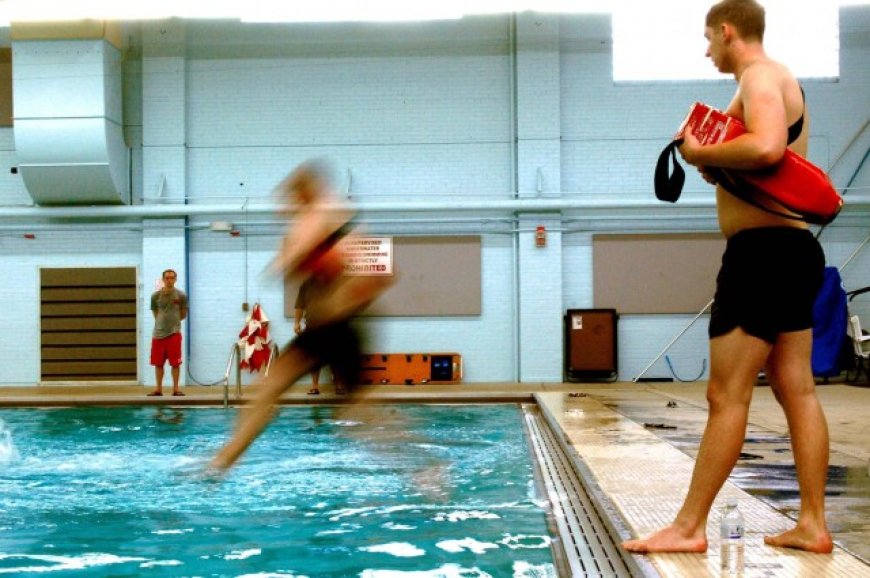Keeler Lifeguards Pool Their Weight: Strength in Every Stroke
The Lifeguard Course at Pool serves a dual purpose. While it prepares individuals for emergency response, it also instills a broader awareness of water safety culture within the military.

Not Just a Chair by the Pool
The image of a lifeguard often conjures thoughts of someone perched comfortably in a tall chair, blowing a whistle at splashing kids or unruly swimmers. But at Keeler Pool, the reality is far more intense and demanding.
For six dedicated soldiers, the journey to that chair began with a rigorous two-week Lifeguard Course that tested not only their physical limits but their mental resilience.
This course, held at Fort Jackson's Keeler Pool, is no mere formality. Its a transformation process designed to convert capable soldiers into professional lifeguardsrescuers prepared to handle high-stakes aquatic emergencies with precision and composure.
Making the Cut: The Entry Challenge
The screening process alone is enough to filter out the uncommitted. Of the 28 soldiers who attempted the entry qualification, only 18 succeeded in swimming 500 metersjust over a quarter of a milein under 13 minutes. Its not a feat of casual swimming; it demands stamina, form, and speed.
By the end of the course, we aim to cut that swim time below 10 minutes, said Brian Sweetman Jr., a supervisory sports specialist at Keeler Pool and native of Anchorage, Alaska. Thats a big jump, but it's crucial for effective water rescues.
Beyond Endurance: Skills That Save Lives
Once enrolled, the soldiers dove headfirst into training. For hours each day, they swam laps, honed their strokes, and practiced the art of efficient movement through water. But swimming was only the beginning.
Participants learned critical lifesaving techniques including CPR, spinal injury management, oxygen administration, and rapid victim extraction from both shallow and deep water scenarios. They were taught how to enter the water safely during a rescue, control panicked victims, and execute both solo and team-based rescues.
If youre too tired or lose focus during a rescue, you risk turning one victim into two, said Sweetman. Thats not an option.
Battlefield Readiness Meets Aquatic Precision
These lifeguards are no ordinary pool workers. Many, like Sgt. 1st Class Channing Rosenbalm of Tacoma, Washington, are seasoned soldiers with specialized responsibilities. A platoon sergeant with the 3rd Squadron, 38th Cavalry Regiment, 201st Battlefield Surveillance Brigade, Rosenbalm emphasized the trainings practical value: We do all of the waterborne operations for the long-range surveillance company, so this training is extremely beneficial.
He continued, Its not just about pulling someone out of the waterits about being able to assess a situation calmly, respond with skill, and protect yourself and your team. Thats a survival skill, not just a pool skill.
The Mental Game: Confidence in Chaos
While the physical toll is immense, the mental conditioning may be even more important. Trainees must learn to make decisions in seconds, stay calm under pressure, and trust their skills in dynamic and unpredictable situations. Every rescue scenario during training is designed to simulate panic, disorientation, and fatigue.
This psychological resilience is crucial, especially for soldiers who operate in austere environments. Whether conducting reconnaissance missions or serving at a base pool, these lifeguards must stay alert and emotionally grounded.
A Commitment That Extends Beyond Training
Graduates of the course dont walk away with just a certificationthey walk into a duty of responsibility. After the program, the newly minted lifeguards are tasked with manning Keeler Pool, ensuring the safety of fellow soldiers and civilians. Their training also positions them as leaders and instructors for future classes.
Additionally, their lifeguard credentials support unit readiness. With more trained water safety personnel available, units can conduct training and recreational events with less administrative overhead and greater safety assurance.
The Broader Mission: Building a Culture of Safety
The Lifeguard Course at Pool serves a dual purpose. While it prepares individuals for emergency response, it also instills a broader awareness of water safety culture within the military. With drownings remaining a leading cause of accidental death in the military, having trained professionals embedded in units across the force is critical.
Every soldier trained here goes back to their unit with more than just lifeguard knowledge, said Sweetman. They become advocates for safety, fitness, and preparedness. Thats how you build a strong, resilient force.
Adapting Military Excellence to Civilian Application
Beyond their roles on post, many of these soldiers carry their certification into civilian lifewhether through seasonal work as lifeguards, coaching swim teams, or serving their communities during emergencies. The skills gained are universally valuable and foster a lifelong mindset of readiness and public service.
Theres a real pride that comes with knowing you can save someones life, Rosenbalm said. Thats a skill set you never stop developing.
Credit: Original reporting and coverage by Sgt. Zachary Gardner
From Soldiers to Lifesavers
The path to becoming a lifeguard at Keeler Pool is far from simple. It requires grit, endurance, and a deep sense of duty. But for the soldiers who succeed, the reward is more than a red swimsuit and a whistleits the knowledge that theyre ready to act when lives are on the line.
This isnt just about sitting poolside. Its about standing readywhether in a warzone, a training facility, or the deep end of a pool. And thanks to the commitment of soldiers like Sgt. Rosenbalm and the leadership of trainers like Brian Sweetman Jr., the lifeguard chair at Keeler Pool is a post of honor and readiness.
Author Bio
Harlan Elio is a writer, content strategist, and defense enthusiast who brings stories of military life to the forefront with depth and clarity. His work highlights the resilience, training, and humanity of the men and women in uniform.










































